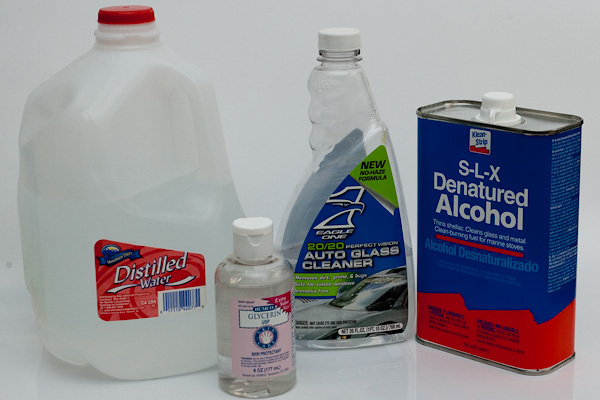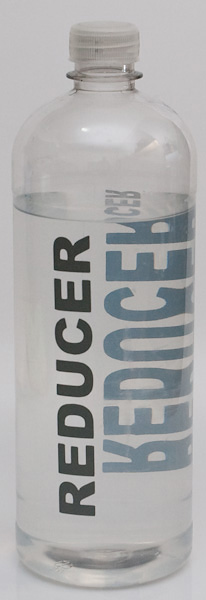 When using water-based paints for airbrushing a quality reducer can make or break your results.
When using water-based paints for airbrushing a quality reducer can make or break your results.
Browsing around the Internet there are hundreds of home-brew recipes for water-based paint reducer. I've tried a few and had mixed results, some better than others. The recipe I've come to use through experimentation is as follows:
- 3 parts Distilled Water
- 1 part Denatured Alcohol
- 1 part Ammonia Free Window Cleaner (Clear is best)
- Drops of Glycerin (see notes)
You can get all of the ingredients at Wal-Mart (in the USA).

 Its important to use the proper ingredients to get the best results. I constantly see people posting that they tried the formula and didn't like the results etc, and almost every time it comes down to them not using the correct ingredients.
Its important to use the proper ingredients to get the best results. I constantly see people posting that they tried the formula and didn't like the results etc, and almost every time it comes down to them not using the correct ingredients.
Distilled Water is important to keep minerals and added chemicals out of the mix, its also better for your airbrush keeping water deposits at bay.
Denatured Alcohol is not the same as Isopropyl "Rubbing" Alcohol. They are different types of solvents and you will not get good results using Isopropyl. Using Isopropyl will cause adhesion issues, the denatured alcohol is a stronger solvent and helps with the adhesion of paint to surface.
Clear Ammonia Free Window Cleaner is preferred as Ammonia has been rumored to attack the chrome on airbrushes. I use Eagle 20/20, but there are numerous brands out there. The key to look for is Isopropanol based cleaners. Try and avoid products with perfumes or tints to them.
Glycerin is a surfactant. It breaks the surface tension of the water used in the reducer. This allows it to stay atomized and not "stick" to the needle as much. They break this surface tension by absorbing the water in the air around it. This breaks down that "skin" on water that forms between air and the water under the skin. If you've ever seen those bugs that skate around on the water, they do so by taking advantage of surface tension. If you were to add a few drops of glycerin to their water source, they would poke through the water instead of ride on it.
The glycerin is a surfactant. It causes water to absorb water in the atmosphere around it vs holding the surface tension. This causes the water to atomize finer, and not build up a "drop" on the needle then blow off.. Water w/o glycerin wants to bind to itself and form drops using surface tension. This is a negative for us, as we want the water to not bind to itself, and to flatten out, and atomize into smaller "drops". If you add too much glycerin to your mixture, you will cause your paint to not dry or dry very slowly. This is because it will keep trying to absorb water from the atmosphere, and not evaporate fully. I've found 10 drops to 20oz of reducer to be perfect for me, but I live in the land of dryness... anywhere from 6-10 drops in a more humid environment might be best.
I think its helpful to understand what each chemical in your reducer does for you so you can make informed decisions on how to use it.
I usually make up 20oz of reducer at a time and my measurements are:
- 12oz Distilled Water
- 4oz Denatured Alcohol
- 4oz Window Cleaner
- 10 drops of Glycerin
I use this reducer on all my water-based paints such as Auto Air, Createx, Jacquard, Faskolor, and even helps with flow on the cheap craft paints. I've had no adhesion issues using this reducer formula painting helmets, helicopter canopies, plastic models, foam, metal, fiberglass, and RC lexan shells.
Here is the price breakout for AutoAir Reducer cost vs. Homemade... you may be surprised!
| Gallon | Quart | Pint | 4oz | 1oz | |
|---|---|---|---|---|---|
| Auto Air 4011 Reducer | $175.00 | $47.00 | $25.00 | $6.50 | $1.63 |
| Homemade Reducer | $9.22 | $2.30 | $1.15 | $0.29 | $0.07 |
Hope this little bit of information helps you get finer lines, less tip dry and better results. Enjoy!
Jason Jones
